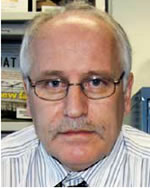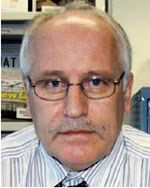
Northern Ontario boasts a global reputation for its treasure chest of mineral wealth – nickel, copper, zinc, gold, and now, even diamonds, but could the region also host commercial reserves of oil and gas?
Conventional wisdom in the oil and gas industry discounts the likelihood of commercial reserves of non-renewable energy in the sedimentary basins of Ontario’s Far North, but no one really knows for sure.
“There has been a lot of debate in the petroleum industry about the Basin’s potential for oil and gas, but there have been very few holes drilled, and that was back in the oil crisis of ’70s,” said John Gingerich, director of Advanced Explorations Inc. “We know that oil seeps have been mapped, so until the area is more thoroughly explored, we don’t really know.”
Oil and gas exploration can be very expensive, but Gingerich, a professional geophysicist and former director of research and technical innovation for Noranda, claims that airborne laser-induced fluorescence technology can identify the most prospective locations for drilling and significantly reduce the cost of exploration.
The technology, developed by Laser Diagnostics Instruments of Estonia and marketed internationally by affiliate LDI3 of Ottawa, measures the absorption and reflection signatures of ground or water targets illuminated by a laser. It is used primarily for monitoring water quality in production processes, assessing the environmental impact of oil spills and identifying pipeline leaks.
Gingerich’s company, Advanced Explorations, has negotiated a global license to use the technology for oil and gas exploration.
“If you think about the physical limitations and the cost of somebody on the ground taking a sample every three metres in an area of 1,000 square kilometers, it’s horrendous,” said Gingerich, who is also a member of the Ontario Geological Survey’s (OGS) advisory board.
“We can cover between 500 and 1,500 square kilometers in a day. This is the type of system that could drastically change the government’s ability to quickly assess the potential for oil.”
One million sq km
The Hudson Bay Basin covers an area of close to one million square kilometers.
Gingerich was ini-tially attracted to laser fluorescence technology in 1999 when he was with Noranda. The price of zinc hit rock bottom and mining companies were aggressively looking for zinc oxides, which are much less expensive to process. “From a geo-physical mapping pers-pective, they don’t have very much of a signature,” explained Gingerich. “You almost have to stand on a deposit to know you have one, but one of the things about zinc oxides is that they fluoresce.”
Gingerich investigated several laser fluorescence technologies and had just learned about LDI’s work when Noranda pulled the plug on the project. “LDI had been working on laser fluorescence for 20 years and had advanced it way beyond what we thought the state of the art was,” he said.
Intrigued by the technology, Gingerich reconnected with the company following his departure from Noranda.
While proven as an effective means of detecting and measuring oil spills for environmental monitoring purposes, laser fluorescence has yet to catch on as an exploration tool.
Gingerich has had some preliminary discussions with the OGS with a view to demonstrating the technology in the province’s Far North.
“There is a need to conduct some applied geoscience to better understand (the Far North’s) non-renewable energy potential,” agreed OGS Director Andy Fyon.
“The Ontario Geological Survey is interested in learning about the capabilities of any technology or method that helps improve (our) understanding about (the province’s) mineral and non-renewable energy resources,” he added.
Discussions have also been held with oil and gas companies, but innovative technologies with no track record or case histories can be a tough sell, so instead of offering laser-induced fluorescence surveys on a fee for service basis, Gingerich has decided to get into the oil exploration business himself.
Advanced Explorations will leverage the technology to identity and acquire property, apply for licenses, build resources and work with strategic partners.
Currently, laser-induced fluorescence is strictly focused on detecting oil seeps from underground deposits.
Shallow seas hundreds of millions of years ago covered the Moose River and Hudson Bay Basins. “As generations of marine organisms died, their organic and skeletal remains settled to the sea bottom,” explains an Ontario government web site. “As these organic materials, rich in carbon and hydrogen, became more deeply buried, they were subjected to greater and greater temperatures and pressures which eventually transformed them into oil and natural gas.
“These ‘hydrocarbons’ are buoyant and migrated along and through layers of porous and permeable rock until they either reached the surface as a seep or were trapped by a barrier of less permeable rocks to form a pool or reservoir.”
A second generation of the technology will be developed to detect gas, said Gingerich.



.jpg;w=120;h=80;mode=crop)